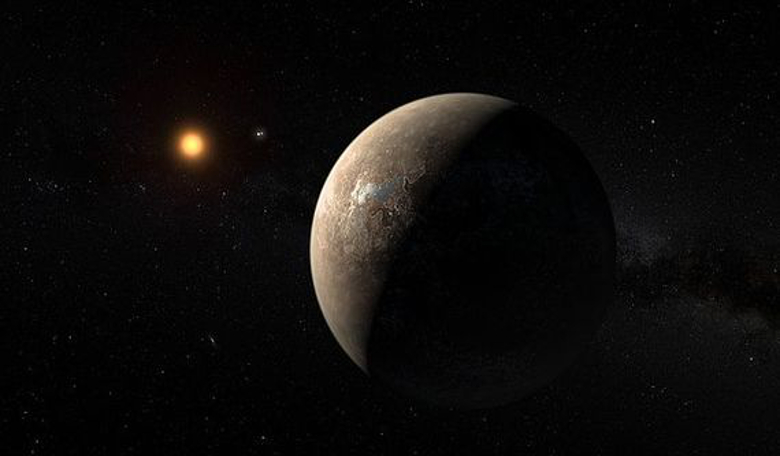After the announcement on Wednesday that an Earth-Sized planet around Proxima Centauri has been found, a flurry of research papers have been released speculating on everything from the planets habitability prospects, to how it was formed. It is even suggested that Proxima b could have a companion (or two). And scientists won’t have to wait too long before some of these theories are confirmed or not. Researchers say that within 10 years, Proxima b’s atmosphere could be imaged directly by large telescopes such as the European Extremely Large Telescope (E-ELT), not only that but with space telescopes such as WFIRST, Proxima b could be the first exoplanet to have its spectra examined for active biology.
The general consensus regarding the potential habitability of Proxima b is a favourable one and researchers presenting the first assessment of the planet seem hopeful that despite the differences experienced – its proximity to its host star, the host star itself – the planet has sufficient energy to support life, and is old enough for life to have gained a foothold. Nonetheless, the question of whether life actually exists now or once did in its past, depends on the planets ability to hold onto water, which is also largely dependant on what type of atmosphere the planet has or once had.
One European team looking at this problem, whose lead author on the research paper is Ignasi Ribas from Institut de Ciències de l’Espai, Spain, have modelled the radiation received over the planet’s lifetime to asses the planet’s ability to maintain liquid water on its surface. The team calculate that Proxima b currently receives 30 times more extreme ultraviolet (EUV) radiation than Earth and 250 times more X-rays.
Despite the high level of stellar activity the team find that Proxima b is likely to have lost less than an Earth ocean’s worth of hydrogen before it reached the habitable zone around its host star, 100–200 Myr after its formation. However, as with all preliminary analysis on Proxima b, the largest uncertainty in their work is the initial water budget of the planet, however the team do conclude that Proxima b is a viable candidate habitable planet.
In another paper published to accompany these results, with lead author Martin Turbet from Laboratoire de Météorologie Dynamique, France, the team use a 3D Global Climate Model (GCM) to simulate Proxima b’s atmosphere. The team find that a broad range of atmospheric compositions can allow for liquid water to remain on the surface, but for this to happen, the planet needs either a large body of water, such as an global ocean, to resupply H2O to the dayside of the planet, or an atmosphere with a strong enough greenhouse effect. This latter characteristic is important for keeping surface temperatures high enough and thus prevent freezing of water on a planet-wide scale.
The team add that apart from receiving the right amount of energy from its host star, the key ingredient to the habitability of a planet is its ability to hang on to all of its volatiles – not just water – but also non-condensible gases (with a greenhouse effect or not) to prevent the formation of a cold-trap on the planet’s surface. To do this, a planet would need an appreciable atmosphere to lock the volatiles in.
Inevitably, comparisons are drawn with Venus, which in spite of bearing the brunt of strong solar emissions in the past, has no conclusive evidence of massive volatile loss and it has managed to keep hold of its dense atmosphere. Nonetheless, Venus suffers from its own greenhouse gas runaway problems, leaving the surface inhospitable to humans.
The above results highlight the difficulty of assessing the habitability of a planet with an environment so different to Earth’s, when only a rough estimate of its orbital history and its past irradiation is known. Still, despite being cautious, scientists have yet to label Proxima b as an arid, lifeless, atmosphere-free rocky body not worthy of further exploration (although that still could be the case) and with the possibility that Proxima b, might soon be joined by Proxima, c, d and possibly e, it may be worth while keeping a close eye on our nearest neighbours.
For more on these results, see: http://arxiv.org/pdf/1608.06827.pdf, http://arxiv.org/pdf/1608.06813.pdf and http://arxiv.org/pdf/1608.06908.pdf.











